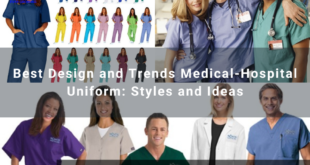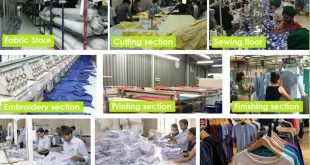
- “Now is not the time to relax COVID-19 restrictions.” – Rochelle Walensky CDC Director
- “The World Health Organization (WHO) advises the use of masks as part of a comprehensive package of prevention and control measures to limit the spread of SARS-CoV-2, the virus that causes COVID-19.” – WHO
- “Sticking to these guidelines(choosing the right mask) will help to ensure efficacy, reusability, and safety for yourself and others.” – CDC
In light of the above quotes, we conclude that our war with the SARS-COV-2 virus is not yet over. We still are surrounded by it and need to take preventive measures as much as we can. A slight carelessness in our attitude towards the virus can give it a chance to rise again like what it did last year.
We still need to make wearing a mask a normal habit of being around the people at least for the time being the risk of getting infected gets minimised.
When we talk about wearing a face mask for covid-19 there are few questions which we need to answer even before wearing the mask. Like— What are the Reasons for wearing a mask? What are the advantages of wearing a mask? How to choose a face mask for Covid-19? How to wear and remove a mask? How to clean and manage a mask?
Here are the answers to all of your queries.
Reasons to Wear a Mask
Many people might be wondering, is it worth wearing a face mask, especially when there is no evidence that a face mask would give you 100% protection? Yes, they are right to some extent but ‘prevention is better than cure’ and wearing a mask in a public and even at home is essential since it reduces the risk of getting infected to large extent.
WHO advises that people should wear a mask in indoor settings with poor ventilation and where the distancing of 1m cannot be maintained. In the household, when the visitor is not a member of the family and 1m distance cannot be maintained with him/her.
The same applies to the outdoor setting if the place where the place is public such as parks, markets, hospitals and where it is not possible to maintain a distance of 1m.
Similarly, the Centre for Disease Control (CDC) also recommends that people should wear a mask in public events and gathering, in public transportation, or anywhere they will around the people.
If people make wearing a mask a normal part of being around other people. They use it to store, clean and dispose of it appropriately the wearing a mask is essential to fight against the SARs-COV-2 virus.
Advantages of Wearing a Face Mask
- A mask reduces the spread of respiratory droplets that may contain infectious viral particles, to transit from the infected persons before they develop symptoms.
- Wearing a mask can reduce the potential of stigmatization acceptance for the infected person and even for those who are caring for him in non-clinical settings.
- It also increases the feeling of contribution, accountability and support among the people to stop the spread of the deadly virus.
- Wearing a mask also encourages to take other preventive measures such as washing the hands at regular interval and not touching the eyes and nose.
- Wearing mask also significant in preventing the transmission of other communicable diseases such as influenza, tuberculosis etc.
- In general, a face mask can save your skin and lungs from dust, dirt, smoke and germs.
- Many masks come nowadays, that protect your skin from the harmful UV rays of the sun.
How to Choose a Covid-19 Mask: Criteria of Selection of a Face Mask
Selecting the best face mask is as crucial as wearing it. Since there are hundreds of brands selling various kind of mask in the market. But, neither every mask is the same in terms of quality and nor any cheap mask can give you the intended protection against the covid-19 virus. Hence knowing the criteria for choosing a mask is extremely important. Here is the buying guide to select the best covid-19 mask. Make sure to evaluate a mask on the following points before you buy it:
Design
A should have at least two layers masks structure but having three-layer is the best. Each layer of the mask is intended to carry out a particular function, such as:
1) The innermost layer of a mask should be made of hydrophilic material. Hydrophilic are materials that show a strong affinity to water. Hydrophilic materials are used as filters in the medical, industrial, and biochemical fields to filter germs such as bacteria, viruses, proteins, particulates, and other contaminants. For example- cotton or cotton blends.
2) The outermost layer made of hydrophobic material. Hydrophobics are the materials that repel water and restrict its passage across them. The use of such in a mask done to provide a dry barrier, while withstanding moisture. For example- polypropylene, polyester, or their blends
3) The middle layer should also be made of a hydrophobic material layer to enhance filtration or retain droplets. For example- polypropylene or another cotton layer.
Fabric
As far as the fabric is concerned, a study proved that a high-thread-count (600 TPI) cotton fabric far better than a moderate-thread-count (80 TPI) quilter’s cotton for particles of all sizes. It is also recommended that the use of a combination of fabric is better than using a single fabric in making a mask.
Fit
The fit of the mask is another crucial factor that you must consider because no matter how well is the mask is built if is not fit, then there is a high risk of transmission of the virus from the loose sides of the mask.
According to research, that leakages around the sides of the mask can degrade its efficiency by as much as 50 per cent or more. This is the very reason why the use of N95 mask is discouraged in non-clinical settings.
Hence, one should always look for a well-fitted mask that hugs your face; covers both nose and chin and with no obvious gaps. But the problem is everyone’s face shaped differently, so it advised to try a few different designs or buy a mask with universal fitting.
Breathability
One should choose a mask that is made of a combination of fabrics but never ignore the breathability. Masks made of non-breathable materials are not advisable to wear they may create a problem in breathing.
On the contrary, avoid those mask which holes or valves in front breathing. Although the valve helps you to breathe easily it doesn’t protect others when you sneeze. Secondly, there are chances of unfiltered air reaching your nose through the valve.
Certifications
The next important factor which you must check before buying a mask is, whether it has proven its efficiency or not. Never wear a mask that is not certified by trusted organisations such as FDA, CE, TUV etc.
Some Other Features
After testing a mask on the basis of fit, fabric and breathability, there are some other factors on which should also be looked upon. Ensuring that the mask has SOFT TIES OR EARLOOPS is important. Earloops will keep the mask at its place and do not hurt ears. This will allow a person to wear it comfortably for long hours. Also, the materials used in making the mask can be washed and machine dried without damage or change to shape. Lastly, a mask should have a NOSE-BRIDGE to ensure a gentle yet snug fit.
How to Wear a Face Mask
Wearing a mask is not enough, people should also ensure that they should wear it the right way. Th WHO also mentioned the right way to wear a mask. The following guidelines should be followed in wearing a mask for maximum protection:
- Clean your hands by washing them with soap or using a sanitiser before you put it on your face. As well as, people should clean their hands whenever they touch the mask or put it off.
- After wearing a mask it should be ensured that it must cover both the nose and mouth and chin.
- After taking off the mask, it must be stored in a clean plastic bag. A fabric mask should be washed every day and if it is a disposable mask then it must be disposed of after use in a trash bin.
- Avoid using the masks with valves such as N95 as there are chances of transmission of the virus through the valve of a mask.
Watch the following video to see practically how to wear a mask.
How Not to Wear a Mask
How to Take off a Mask
How to Clean a Face Mask Covid-19
Washing a reusable mask is important to serve its purpose. Wearing an uncleaned mask repeatedly is not only ineffective but also increases the chances of getting infected. To clean a mask:
- Wash your mask with regular laundry
- Use regular detergent.
- Use the highest heat-setting and leave it in the dryer until it completely dries.
To learn more about the face mask you may click here
DONY MASK – Premium Antibacterial Cloth Mask (Washable, Reusable)
A Vietnam based garment manufacturer company DONY produces HIGH-QUALITY and PREMIUM MASK following all the guidelines given by both WHO and CDC. Having 3-layered protection the mask is capable of restricting 99.9 per cent of bacteria as well as effective against the SARS-COV-2 virus.
Having passed the stringent quality tests the mask has got certification from some of the trusted health organisations around the world such as as- CE, FDA, TUV Reach, DGA etc.
Made by UNIQUE-NANO-SILVER TECHNOLOGY the mask has exceptional breathability as well as extremely effectiveness. Besides breathability, the mask is excellently comfortable to wear all day in any setting.
Dony’s wholesalers and distributors anywhere in the world, especially those based in the US, the Middle East, and the EU market. The company also offers free samples, trial orders and branding opportunities(custom logo/label/OEM-ODM). Moreover, the company stands behind its masks and offers a 100% Money-Back Guarantee on not following its quality and on-time delivery commitments.
 Henry Pham (Pham Quang Anh), CEO of DONY Garment
Henry Pham (Pham Quang Anh), CEO of DONY Garment
This year, we have found that many international buyers are seeking new suppliers based in nations outside of China and Thailand to purchase many goods and products, including uniforms, workwear, reusable cloth face mask, and protective clothing.
At DONY Garment, we are proud to welcome international customers, especially those based in the US, Canada, the Middle East, and the EU market to discover the professional production line at our factory in Vietnam.
We guarantee our products are of the highest quality, at an affordable cost, and easy to transport across the world.
 Dony Garment Vietnamese Garment Factory Supplier – Apparel Clothing & Textile Manufactured. Private label clothing Produce women, men, children baby wear – Casual Clothing, Uniform, Workwear
Dony Garment Vietnamese Garment Factory Supplier – Apparel Clothing & Textile Manufactured. Private label clothing Produce women, men, children baby wear – Casual Clothing, Uniform, Workwear








 Henry Pham (Pham Quang Anh), CEO of DONY Garment
Henry Pham (Pham Quang Anh), CEO of DONY Garment



